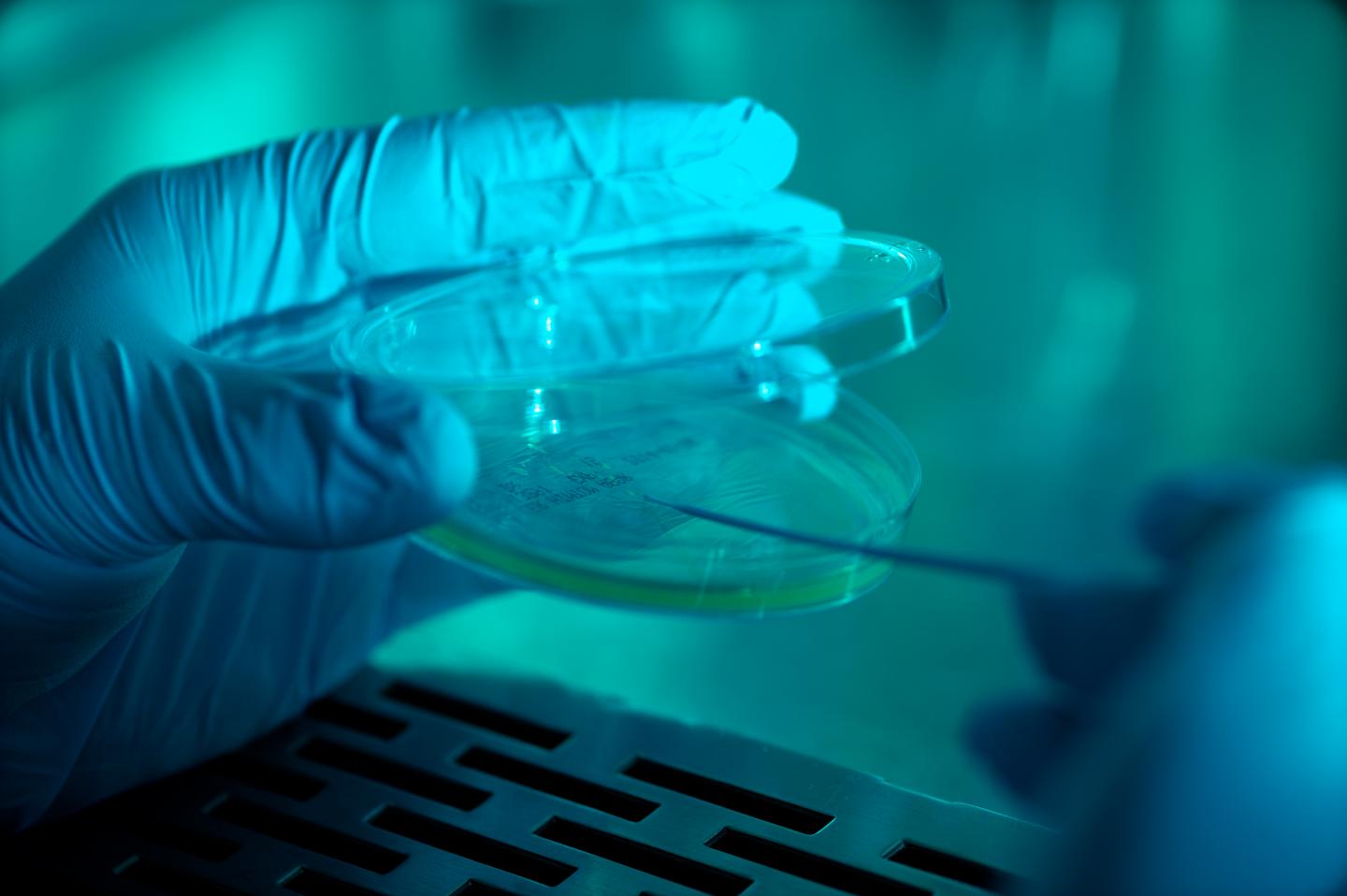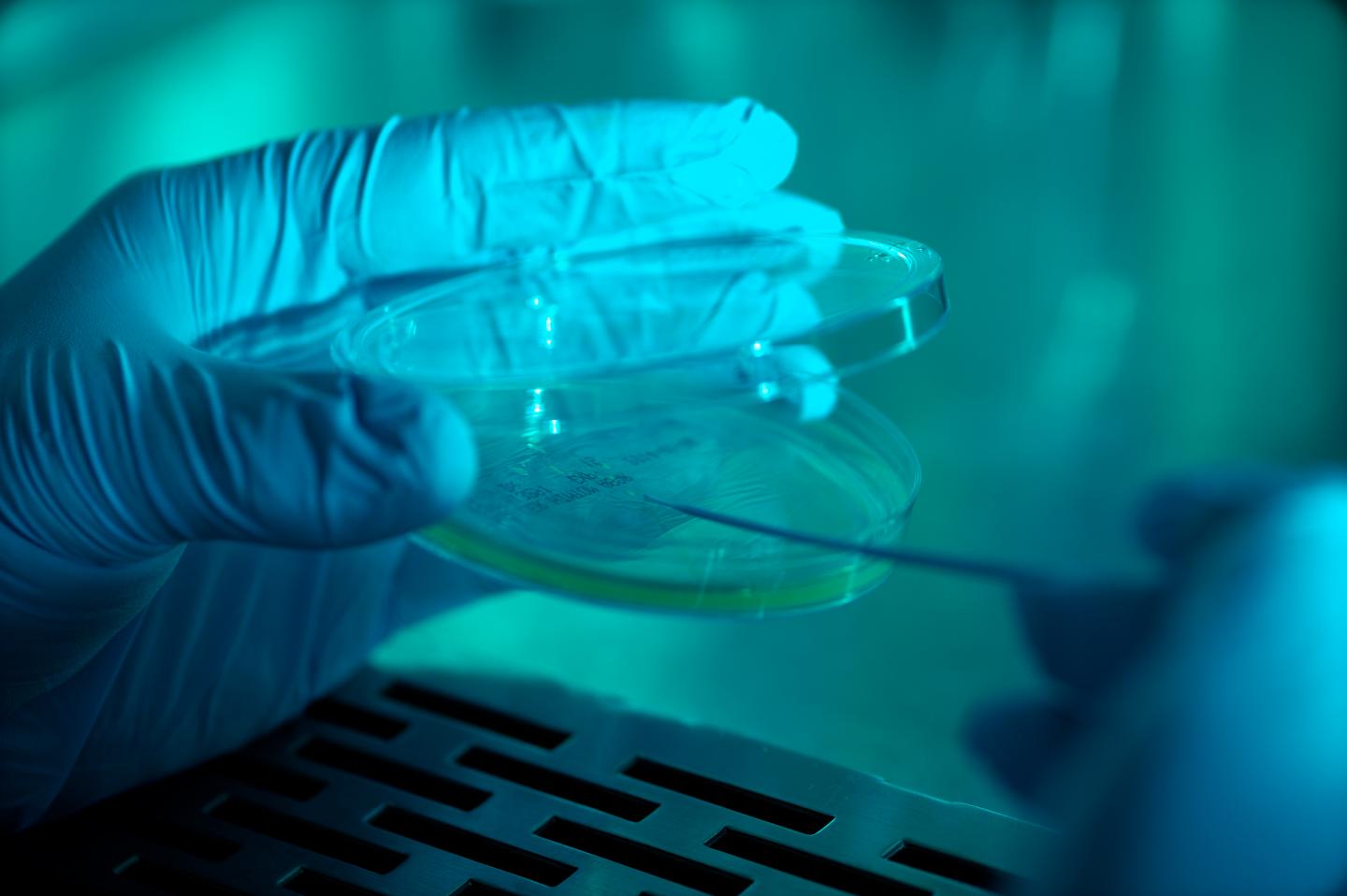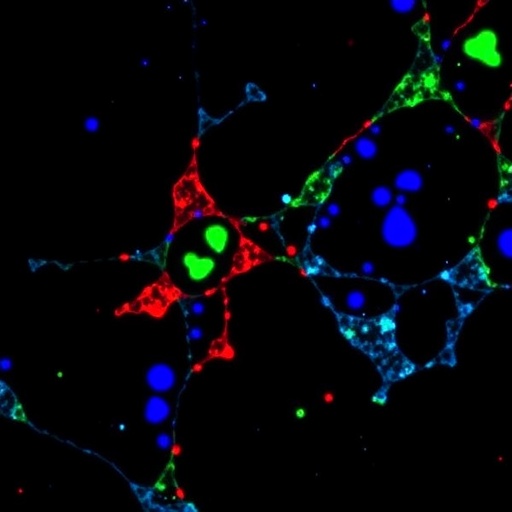
Credit: Sarah Bird/Michigan Tech
Diabetic foot ulcers can take up to 150 days to heal. A biomedical engineering team wants to reduce it to 21 days.
They're planning to drop the healing time by amplifying what the body already does naturally: build layers of new tissue pumped up by nitric oxide. In patients with diabetes, impaired nitric oxide production lessens the healing power of skin cells and the Centers for Disease Control reports that 15 percent of Americans living with type II diabetes struggle with hard-to-heal foot ulcers. However, simply pumping up nitric oxide is not necessarily better. The long-term plan of Michigan Technological University researchers is to create nitric oxide-laden bandages that adjust the chemical release depending on the cell conditions.
To do that, they first have to figure what's going on with nitric oxide in skin cells. Assessing nitric oxide under diabetic and normal conditions in human dermal fibroblast cells is the focus of the team's latest paper, published this week in Medical Sciences.
Diabetes stats from the World Health Organization, International Diabetes Federation, "Diabetic foot ulcers and their recurrence" in New England Journal of Medicine, and "Advanced biological therapies for diabetic foot ulcers" in Archives of Dermatology reveal the challenge researchers in this field face:
- 1.5 million deaths globally in 2012
- 425 million people worldwide live with diabetes
- 15 percent or more live with diabetic foot ulcers
- 2.5 times more likely to die
- 90-150 days to heal
- $176 billion spent in U.S. every year on diabetes
Cell-mediated Symphony of Complexity
Megan Frost is the interim chair of the Department of Kinesiology and Integrative Physiology as well as an associate professor of biomedical engineering and an affiliated associate professor of materials science and engineering. She runs a polymeric biomaterials lab at Michigan Tech where she works on nitric oxide-releasing technology.
"Nitric oxide is a powerful healing chemical, but it's not meant to be heavy-handed," Frost says. "We're looking at the profiles of healthy and diabetic cells to find a more nuanced way to recover wound function."
As a wound heals, three types of skin cells step in. Macrophages are the first responders–and the most widely studied cells–that arrive within 24 hours of damage. Next, fibroblasts arrive, which are like the body's engineers. They help lay down the extracellular matrix that makes it possible for the next cells, keratinocytes, to come in and do the heavy-lifting and rebuilding.
"Wound healing is a complex, cell-mediated symphony of events, progressing through a series of predictable and overlapping stages," Frost and her team write in their Medical Sciences paper. When any part of that orchestra is out of tune, the whole process falls flat. Fibroblasts, which are not as well studied as macrophages in the healing process, are a key instrument and past studies have shown their delayed response in patients with diabetes may be a major factor in slow healing time.
Nitric Oxide vs. Nitrite
That's where nitric oxide steps in, a kind of chemical metronome to get the process back into the right rhythm. But the body's dermal orchestra is not so simple–just as playing a metronome louder and louder isn't necessarily going to make a musician's timing improve, flooding a wound with nitric oxide isn't a cure all.
"The old approach is to add nitric oxide and sit back to see if it works," Frost says. "What we're finding is that it's not enough to apply and leave; we have to keep tabs on how much nitric oxide is actually needed."
A big problem that Frost and her team address is how nitric oxide is measured in the first place. Current practice substitutes measuring nitrite for nitric oxide–a misleading switch, Frost says, because nitrite is a byproduct with no time signature. While stable nitrite is easier to measure, by itself it cannot relay the real-time healing status like nitric oxide levels can.
So, Frost's lab built a nitric oxide-measuring device for their study by hand. That creates a challenge since it means taking measurements is much harder, which limits the dataset size, but Frost has an agreement with Zysense, LLC to streamline the building process and produce commercial nitric oxide measurement devices that would improve their research.
Next Steps
Collaboration is a key part of the engineering design process. To build a nitric oxide bandage with personalized healing power, the team plans to work next with the UP Portage Health System to gather cell samples from local patients. By expanding their cell samples–and applying the tech to real-world patients–the team will continue to broaden their database while deepening their knowledge of nitric oxide mechanisms.
In a few years, they plan to have a working bandage prototype, one that leaves off the clunky nitrite proxies and nitric oxide dumps. Instead, patients dealing with diabetic foot ulcers will see a light at the end of the tunnel much sooner than half a year or more–the nitric oxide-releasing bandage could help heal one of healthcare's toughest diseases in less than a month.
###
Media Contact
Allison Mills
[email protected]
906-487-2343
@michigantech
http://www.mtu.edu
Original Source
https://mtu.edu/news/stories/2018/november/nitric-oxide-technology-helps-quickly-heal-diabetic-foot-ulcers.html http://dx.doi.org/10.3390/medsci6040099





